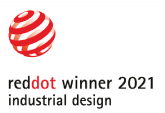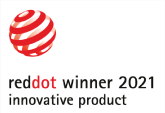What is innovation?
First, we need to understand that innovation isn’t merely some starting point or some particular new thing—be it a product, service, or business model. I like to think that, since the innovation space is an ecosystem that involves lots of people and companies with diverse backgrounds and perspectives, the concept takes in all three of these areas—products, services, and business models—in its expression within the commercial universe.
Since none of us pursues innovation for its own sake, we must contextualize discussion of this concept within the confines of the marketplace. That’s a long way of saying that the ultimate benchmark of innovation is commercial success. This criterion is what separates invention from innovation. Yes, innovation has to be new, whether it’s something completely new or a revision of a former product, service, or business model. But nobody cares about the “failed new,” rather, we celebrate those new things that bring success.
Some like to think of innovation as a specific event that occurs at the stage of identifying opportunities through talking with customers. Within this narrow definition (and narrow is often good), the thinking is that innovation can only occur when a product or service concept emerges in response to the identification of problems faced by the end-user. While this is certainly a valuable activity that enhances the process of innovation, it leaves me unsatisfied with what I see downstream from this stage of development.
In a previous Tangents post, we cited an academic research study, “Does Customer Interaction Enhance New Product Success,” that provides a statistical correlation between robust customer research and the market success of an innovation effort. Customer research is important at multiple stages of developing a product, in addition to the opportunity identification stage. While highly important to the innovation team’s success, it would be a mistake to think that customer research is the total scope of innovation.
Many people must perform great work to achieve commercial success for new products and services. These people include sales, marketing, engineering, design, executive leadership, manufacturing, and external vendors and partnerships. When these teams convene for ideation sessions focused around discovery, refinement, and implementation stages, they accelerate the process of innovation. Each team member brings his or her respective expertise to bear on the problems being faced and effective solutions can be proposed. If innovation were easy, everyone would do it . . . effectively.
You can see this in how companies need to restructure their sales and customer service teams to meet demands created by new products and services. And you can also see that when companies get a taste for innovation that’s successful, it changes the entire culture of the organization. While many organizations have only change as a constant, companies that embrace innovation and see success from it will see positive change as a constant, as opposed to change for reactionary reasons. There’s a big difference between defining the market and being behind the curve.


